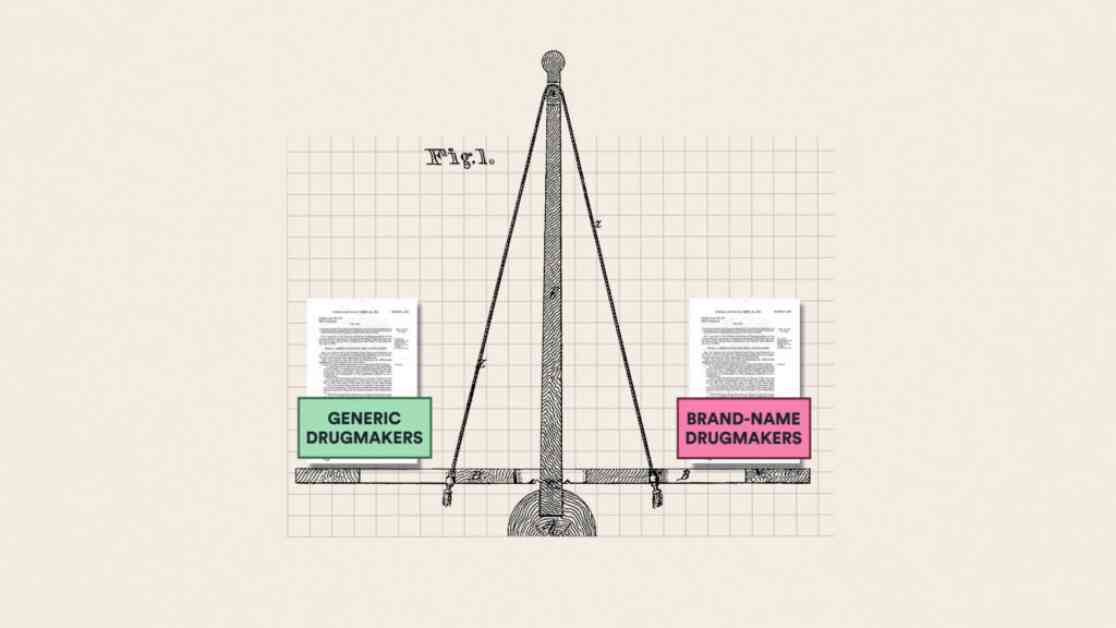Title: How the Affordable Drugs Bill Revolutionized Healthcare and Saved Americans Money
Sept. 10, 2024
The landscape of affordable medication in America has undergone a significant transformation over the years, thanks to the implementation of the Drug Price Competition and Patent Term Restoration Act of 1984, commonly known as the Hatch-Waxman Act. This groundbreaking legislation, spearheaded by legislators Hatch and Waxman, has played a pivotal role in making generic drugs more accessible to consumers, ultimately leading to substantial cost savings. In this installment of “Behind the Counter,” we delve into the intricacies of this legislation and its impact on the pharmaceutical industry and consumers alike.
The Hatch-Waxman Act marked a turning point in the realm of drug pricing by streamlining the process for generic drugs to enter the market. Prior to this legislation, consumers often faced lengthy waits for generic versions of brand-name medications to become available after the expiration of their patents. However, with the enactment of the Hatch-Waxman Act, generic drug manufacturers were granted the ability to initiate research and development on generics before the patent expiration of the brand-name drug, without the fear of infringing on patents. In exchange for this concession, brand-name drugmakers were granted a five-year extension of market exclusivity for their products.
While the Hatch-Waxman Act has undoubtedly facilitated the entry of generic drugs into the market, it is not without its limitations. In this video, we explore the complexities of how this legislation balances the interests of brand-name and generic drug manufacturers, shedding light on the challenges and loopholes that exist within the system. Additionally, we delve into the various tactics used by some brand-name drugmakers to prolong their market exclusivity and delay the entry of generic competitors, thereby impacting consumers and healthcare costs.
One of the key provisions of the Hatch-Waxman Act that has had a profound impact on the pharmaceutical industry is the concept of patent extensions. By granting brand-name drugmakers additional years of market exclusivity, this provision has allowed them to maximize their profits and maintain control over their products. However, this extension also has implications for consumers, as it can result in delayed access to more affordable generic alternatives. We delve into the repercussions of these patent extensions on healthcare costs and consumer access to essential medications.
In recent years, the issue of drug pricing and accessibility has garnered increased attention from policymakers and the public alike. The rising cost of prescription medications has become a significant barrier for many Americans, leading to concerns about affordability and access to essential treatments. The Hatch-Waxman Act has been instrumental in addressing some of these challenges by promoting competition in the pharmaceutical industry and driving down prices through the availability of generic alternatives. However, there is still work to be done to ensure that all Americans have access to affordable and essential medications.
As we continue to navigate the complex landscape of drug pricing and patents, it is essential to remain vigilant and informed about the policies and regulations that govern the pharmaceutical industry. The Hatch-Waxman Act serves as a cornerstone of affordable medication in America, but it is crucial to address its shortcomings and explore opportunities for further reform. By shedding light on the intricacies of this legislation and its impact on consumers, we can work towards a more equitable and accessible healthcare system for all Americans.
The Impact of Generic Drugs on Healthcare Costs
The availability of generic drugs has had a profound impact on healthcare costs in America, providing consumers with more affordable alternatives to brand-name medications. Generic drugs are typically priced significantly lower than their brand-name counterparts, making them accessible to a wider range of patients. This increased competition in the pharmaceutical market has driven down prices and resulted in substantial cost savings for both consumers and the healthcare system as a whole.
One of the key benefits of generic drugs is their ability to lower prescription drug costs for consumers. By offering more affordable alternatives to brand-name medications, generic drugs help to alleviate the financial burden on patients who rely on prescription medications to manage their health conditions. This cost savings can be particularly significant for individuals with chronic conditions who require long-term medication therapy, as it allows them to access essential treatments without breaking the bank.
Furthermore, the availability of generic drugs has had a positive impact on healthcare spending overall. By providing more cost-effective alternatives to brand-name medications, generic drugs help to reduce the financial strain on the healthcare system and make essential treatments more accessible to a wider population. This reduction in healthcare costs benefits not only individual patients but also the healthcare industry as a whole, leading to improved affordability and sustainability in the long run.
Challenges and Opportunities for Reform
While the Hatch-Waxman Act has been instrumental in promoting the availability of generic drugs and driving down healthcare costs, there are still challenges and opportunities for further reform within the pharmaceutical industry. One of the key issues that policymakers and stakeholders must address is the prevalence of patent extensions and other tactics used by brand-name drugmakers to delay generic competition.
Patent extensions have become a common strategy employed by brand-name drugmakers to maintain their market exclusivity and prolong their profits. While these extensions may benefit the brand-name manufacturers, they can have detrimental effects on consumers by delaying access to more affordable generic alternatives. Policymakers must explore ways to limit the abuse of patent extensions and promote a more competitive marketplace that benefits both consumers and the pharmaceutical industry.
In addition to addressing patent extensions, policymakers must also consider other avenues for reform within the pharmaceutical industry. This may include exploring ways to streamline the approval process for generic drugs, incentivize the development of new medications, and enhance transparency in drug pricing practices. By fostering a more competitive and transparent marketplace, policymakers can work towards ensuring that all Americans have access to affordable and essential medications.
Conclusion
The Affordable Drugs Bill, also known as the Hatch-Waxman Act, has played a crucial role in revolutionizing the pharmaceutical industry and making medication more affordable and accessible to Americans. By promoting competition in the market and facilitating the entry of generic drugs, this legislation has driven down healthcare costs and improved access to essential treatments for patients across the country. However, there are still challenges and opportunities for further reform within the industry to ensure that all Americans have access to affordable and high-quality medications. By remaining informed and engaged in the conversation surrounding drug pricing and accessibility, we can work towards a more equitable healthcare system that benefits all consumers.

















